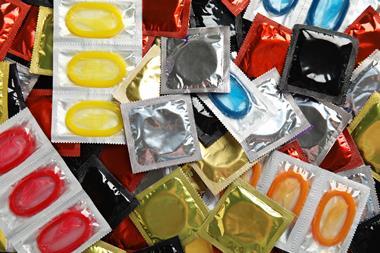Current monitoring practices are likely to be underestimating the levels of per- and polyfluoroalkyl substances (PFAS) in the environment. That’s the conclusion of a new study that also found more work was needed to develop analytical techniques to quantify PFAS in the environment, as well as their impact on people and ecosystems.

The researchers assessed PFAS levels in 45,000 samples of surface and groundwater from around the world, collected over the past 20 years. The samples were concentrated in areas with higher levels of environmental research, such as the US, Canada, Europe and Australia. They also investigated the source of PFAS contamination, including the distribution of PFAS used in various consumer products, such as cosmetics, food packaging and firefighting foams.
These sources were divided into three categories: sites where firefighting foam has not been used, sites where firefighting foam has been used and sites where the source of contamination is not known.
The analysis showed that a substantial fraction of the samples across all categories contained levels of PFAS that were above the national drinking water standards where they were collected. Although given that guidance on PFAS threshold concentrations varies globally, the proportion of samples that were deemed of concern also varied.
‘Drinking water standards vary around the world – in Australia, EU, the US and Canada – so we benchmarked it against that,’ explains Denis O’Carroll, a civil and environmental engineer at the University of New South Wales in Australia, who led the study. ‘The number of samples that exceeded those [limits] was somewhat surprising to us.’
For groundwater and surface water samples with known firefighting foam contamination, around 70% exceeded the proposed US Environmental Protection Agency’s hazard index, which measures how hazardous mixtures of certain chemicals might be to human health, and between 60–80% of samples exceeded the EPA’s new drinking water regulations for perfluorooctane sulfonic acid (PFOS) and perfluorooctanoic acid (PFOA).
And, even when there was no known source, levels of PFAS in groundwater and surface water were found to exceed the US EPA hazard index in around 30% and 15% of samples, respectively. In regard to drinking water regulations for PFOS and PFOA, around 40–50% of groundwater samples, and 30–40% of surface water samples, exceeded the threshold.
Some water treatment plants will remove PFAS found in source water, such as dams, by way of activated carbon, explains O’Carroll, but not all plants are designed to remove it meaning PFAS can still end up in drinking water.
The team are now keen to explore levels of PFAS in other parts of the environment, such as soil and fish, as well as developing models to predict how it moves around the world.
‘PFAS is an example of one pathogenic chemical that we’re using, but there’s a wide range of other ones and as a society we need to consider that,’ says O’Carroll. ‘Just because we can use a high-end product doesn’t mean we should be using it pervasively. For example, there’s zero reason for me to use ski wax with PFAS in it or mountain bike chain lubricant with PFAS in it – it’s these kinds of considerations, awareness is what we need to be thinking about.’
Linda Birnbaum, a toxicologist and microbiologist and former head of the US National Institute of Environmental Health Sciences and the National Toxicology Program, says the findings in the study, while ‘not surprising’, should serve as ‘a wake-up call’. ‘Essentially everywhere they looked, there was PFAS,’ she adds. ‘And lots of the world looks like there isn’t any – but it’s because they haven’t looked.’
‘They’ve measured more than just the six PFAS that the EPA is regulating … but there’s so many PFAS they’ve not even measured – it’s the proverbial tip of the iceberg. The more you look, the more you find.’
Birnbaum says it would be ideal to monitor where companies are making and using PFAS to ensure they’re not releasing it into the environment. ‘You can monitor at the municipal water systems and they can measure what they may have in their system and what they send out to the customer. The thing that gets many people concerned is that for most of us, it’s going to mean an increase in our water bill every month.’
References
DA Ackerman et al, Nat. Geosci., 2024, DOI: 10.1038/s41561-024-01402-8

















No comments yet